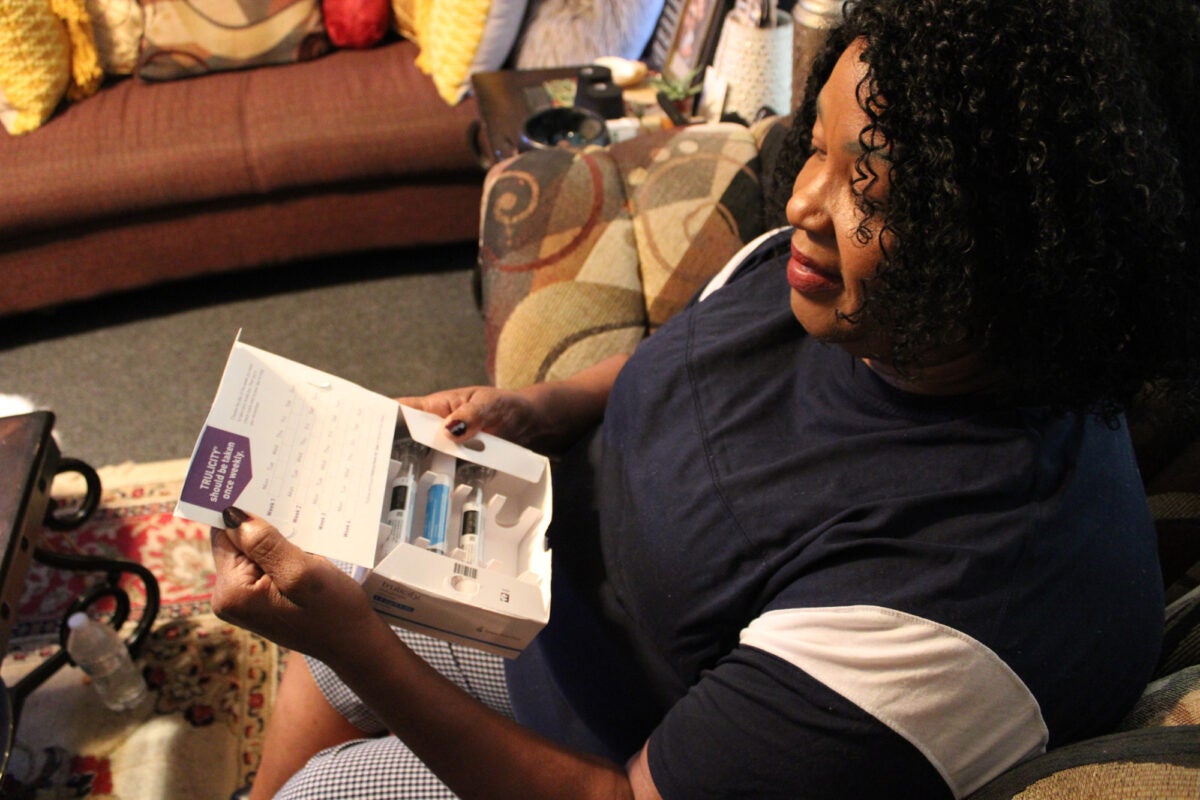
Feature
Living with diabetes and without health insurance
This story was originally published by Public Health Watch and the texas tribune.
Managing diabetes is difficult enough with health insurance. Doing it without insurance can feel impossible.
The disease—the nation’s costliest chronic condition and especially prevalent among the poorest Americans—demands daily care and resources to keep it under control. Left untreated, it mushrooms through the body’s blood vessels, damaging organs and limbs and leaving behind a trail of disability and premature death.
Sign up for Harvard Public Health
Delivered to your inbox weekly.
Yolanda Seaton, 55, has been facing one of the more serious complications: blindness. Seaton—born and raised in Tyler, a small city 100 miles southeast of Dallas—was first diagnosed with Type 2 diabetes about a decade ago. Months later, she dropped her employer-provided health insurance because she could not afford it on her low pay.
For about a year, she skipped the doctor’s office altogether. “I don’t believe in just showing up [to see a doctor], at the mercy of running up a bill,” she said. “I just tried to do what I could with what I knew.” Then a co-worker told her about Bethesda Health Clinic in Tyler, which provides low-cost or free care to uninsured working adults in East Texas.
At the clinic, Seaton got regular checkups, diabetes education, and free insulin. She managed her blood-sugar levels better with daily testing, medicine, and diet changes. But the disease eventually wore down the vessels in her eyes—which happens to about a third of Americans with diabetes. Her vision started to blur; without treatment, she could go blind.
Seaton was lucky. Her providers at Bethesda knew an eye specialist in Houston who was willing to provide the expensive treatments at no charge. During the first year of treatment—which involved injections directly into the eye—Seaton and a family member made the nearly eight-hour round trip six times. Now she’s down to three trips a year. Her vision is better, and she continues to work full-time at University of Texas Health East Texas in patient scheduling; she is her family’s main earner.

Bethesda Health Clinic, located in Tyler, serves working, uninsured residents in East Texas.
Jennifer Scott / Public Health Watch
Many more uninsured Texans—living in the state with the highest uninsured rate in U.S.—likely face similar diabetic predicaments, but without a safety net.
As of 2021, about 2.5 million Texas adults, or 11.1 percent, had been diagnosed with diabetes, compared to a national rate of 8.5 percent, according to the latest data from the Centers for Disease Control and Prevention. From 2001 to 2021, the percentage of adults with diabetes increased by more than half in Texas and by nearly a third nationally.
Within the state, rates are especially high across East Texas. In Smith County, which includes Tyler, 11.8 percent of adults ages 20 and older had diagnosed diabetes in 2020. A few counties south of there, in Angelina County, the rate was 14.5 percent. Farther east, on the border with Louisiana, Sabine County’s rate was 12.4 percent.
Millions more in Texas and tens of millions in the U.S. have prediabetes or diabetes and don’t even know it, the CDC estimates.
The risks of going without a diagnosis or needed medical care may be greater in Texas, as it has the nation’s highest uninsured rate, at 16.6 percent in 2022. A study by university researchers, published in 2020, found that people with health insurance are less likely than those without insurance to have undiagnosed prediabetes or diabetes.
Texas is among 10 states that have refused to expand Medicaid under the Affordable Care Act. Researchers estimate more than 1 million low-income Texans could gain insurance if state leaders passed expansion. That number is likely higher today: By September, almost 900,000 Texans had lost their Medicaid coverage due to expiration of emergency pandemic measures preventing states from disenrolling people.
Public Health Watch interviewed health providers, diabetes educators, and patients about access to diabetes care for the uninsured in parts of East Texas. They said wider insurance coverage could help patients better control the chronic disease and avoid its high out-of-pocket costs and potential devastating outcomes, such as amputation, kidney failure, heart disease, and blindness.
Aaron Dudley, a physician assistant at the Angelina County health clinic in Lufkin, often sees the “worst of the worst” diabetic complications. Most of his patients are uninsured or underinsured and end up at the clinic because they have no other options.
Dudley said he has watched diabetes and its health and financial impacts unravel people’s lives many times during his 14 years at the clinic.
“It snowballs,” he said, “and so they end up worse and worse and worse because they can’t continue to provide for themselves.”
A Slow Killer
Diabetes—whether Type 1 or Type 2—is incurable, can take a lot of effort to manage and may exact a serious physical, mental, and financial toll.
With Type 1, which mostly affects children, the pancreas doesn’t make enough insulin to push sugar, or glucose, into the cells to produce energy. In Type 2—which accounts for at least 90 percent of diabetes cases and is preventable—a person’s cells have become insulin-resistant, leading to chronically high levels of sugar that damage the blood vessels.
When diagnosed, a person can suddenly go from zero medical routine to daily blood-sugar testing, a cache of new prescriptions, and constant vigilance against side effects, such as high cholesterol and blood pressure, dizziness, fatigue, foot sores, and anxiety. Lancing devices, lancets, test strips, alcohol wipes, and blood monitors become part of one’s life.
Doctor’s visits are recommended at least two times a year; four if treatment goals aren’t being met.
One of the hardest parts is behavioral change—eating differently and exercising more. Studies show formal diabetes education is crucial, but only about 55 percent of patients receive it. Cost of care can be hundreds or thousands of dollars, depending on medical coverage.
“It’s kind of like a salmon swimming upstream,” said Marci Wright, a diabetes educator at UT Health East Texas in Tyler. “You have to make a personal decision that you’re going to make healthy choices because our society doesn’t make it easy to do that.”
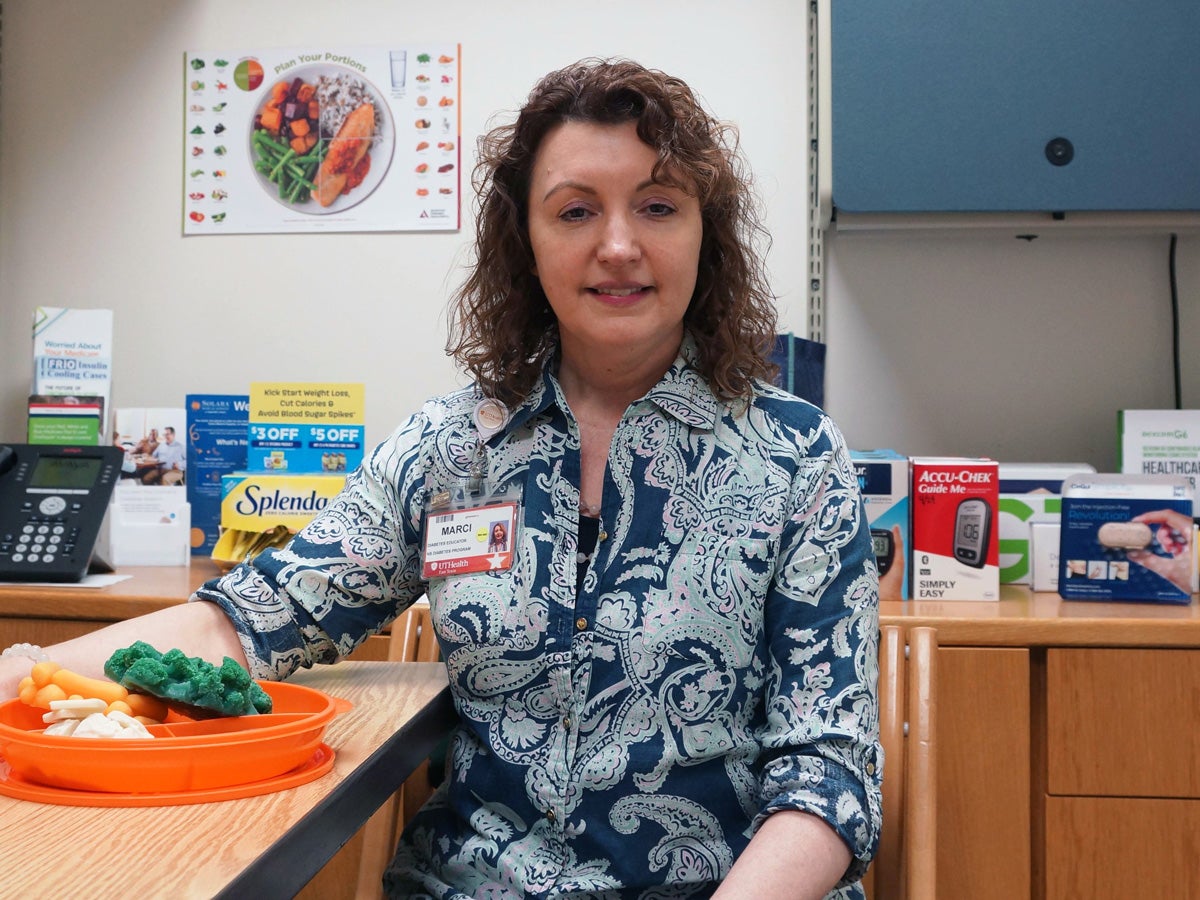
Diabetes educator Marci Wright offers classes through Diabetes University at UT Health East Texas. The program has grown by 41 percent since it added telehealth services last year. In 2022, about 70 percent of its students lowered their blood-sugar levels.
Hannah Levitan / Public Health Watch
The challenges for uninsured Texans, who are more likely to be poor, are stiffer.
Physician William Roberson grew up about 20 minutes from the clinic where he now sees patients—Crossroads Family Care, a federally-qualified health center in Henderson, a Texas city of about 13,000. The clinic takes anyone regardless of insurance status.
As of 2022, 18.5% percentof Henderson residents younger than 65 were uninsured. In surrounding Rusk County, the rate was over 20 percent.
Roberson works at all three of the health center’s locations—including in Palestine and Mt. Enterprise—but spends most of his time in Henderson. About a third of his patients are uninsured; more than half have diabetes.
He diagnoses a new diabetes case about once a month and often sees patients who’ve been off their medications for long periods and are slowly getting sicker.
One reason is cost. He said many uninsured patients struggle to afford even discounted prescriptions as well as monitoring tools such as lancets for pricking fingers and strips for testing blood. Rationing makes the situation worse. For instance, patients who cut back on testing to save money on lancets will have less information about their blood-sugar patterns and when to seek help. “When you have diabetes, you can think things are going well until they’re very bad,” Roberson said.
He regularly sees patients coming off ER visits for complications such as diabetic ketoacidosis, or DKA, a life-threatening condition triggered by low insulin. The condition results from unmanaged diabetes.
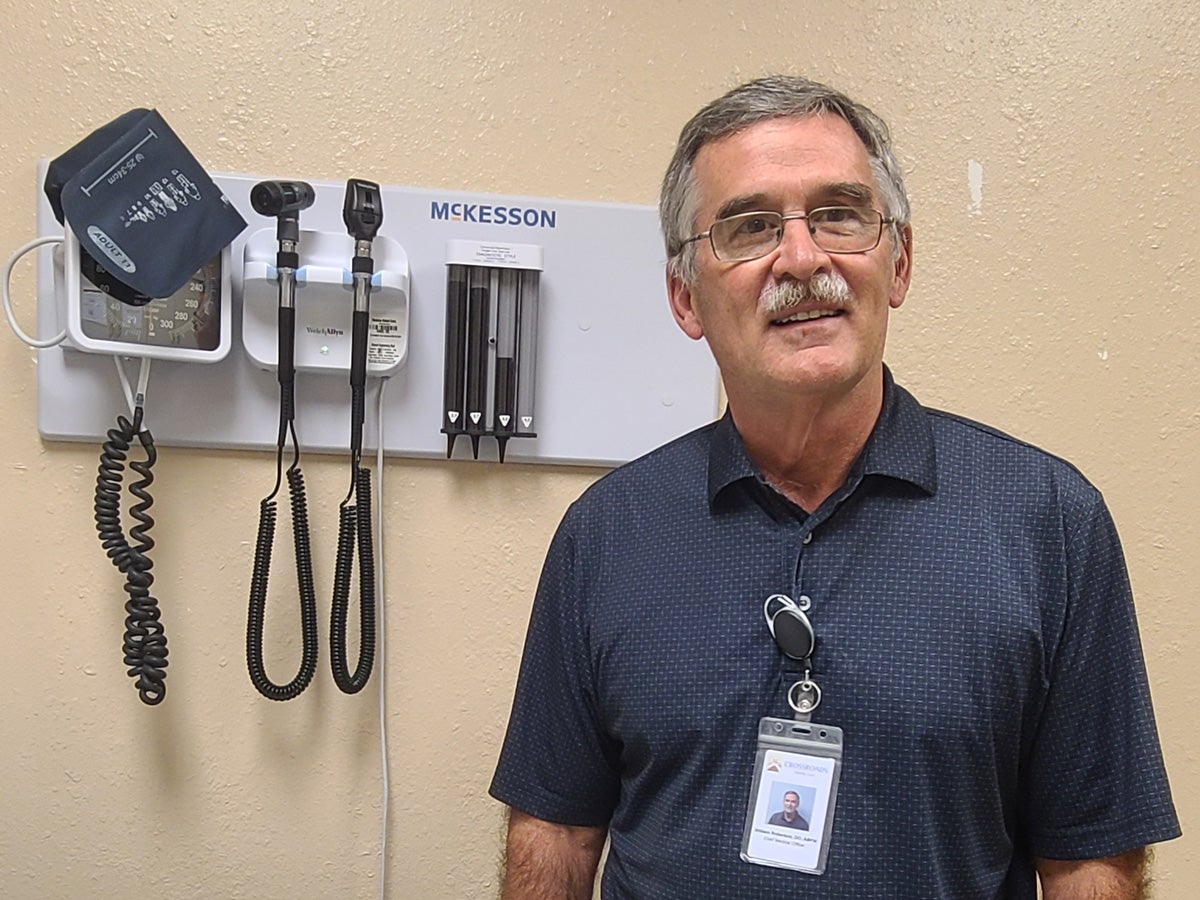
Dr. William Roberson cares for low-income and uninsured patients at Crossroads Family Care, a safety-net clinic in East Texas.
Kim Krisberg / Public Health Watch
Data pulled by Roberson for Public Health Watch show that among Crossroads’ three clinics, 30 percent of uninsured diabetic patients had uncontrolled diabetes—as measured by blood-sugar, or A1C, levels—versus 22% of insured patients.
“My take-home from that is if your diabetes is not controlled, you’re going to have more dialysis, you’re going to have more eye problems, you’re going to have more of these issues,” Roberson said.
He said better access to care would help low-income Texans with diabetes. “Texas Medicaid coverage is better than having no coverage for diabetes,” he said.
Many rural areas with high poverty and uninsured rates and acute physician shortages also have higher diabetes rates and more diabetes-related deaths compared with urban areas.
Diabetic crisis is a regular ER occurrence at Sabine County Hospital, said John O’Hearn, who until late September was interim CEO of the small, critical-access hospital in Hemphill, an East Texas town of about 1,000. Many patients deal with wounds that won’t heal due to poor blood circulation, caused by plaque buildup from high sugar levels.
Diabetes also damages nerves. The circulation and nerve symptoms can lead to foot ulcers and amputation. Low-income people without health insurance are more likely to lose a limb to diabetes.
Diabetes probably underlies many of the ER visits for heart disease and stroke as well, because the disease heightens the risk for both, O’Hearn said. Uninsured patients can get follow-up help in managing diabetes at the hospital’s rural clinic, Toledo Bend Family Medicine, which offers sliding-scale services.
More than 21 percent of Sabine County residents younger than 65 were uninsured in 2022, according to the U.S. Census Bureau. O’Hearn said the high rate puts “enormous pressure” on the small hospital. “Essentially, what we’ve created in Texas is primary care through the emergency room,” he said.
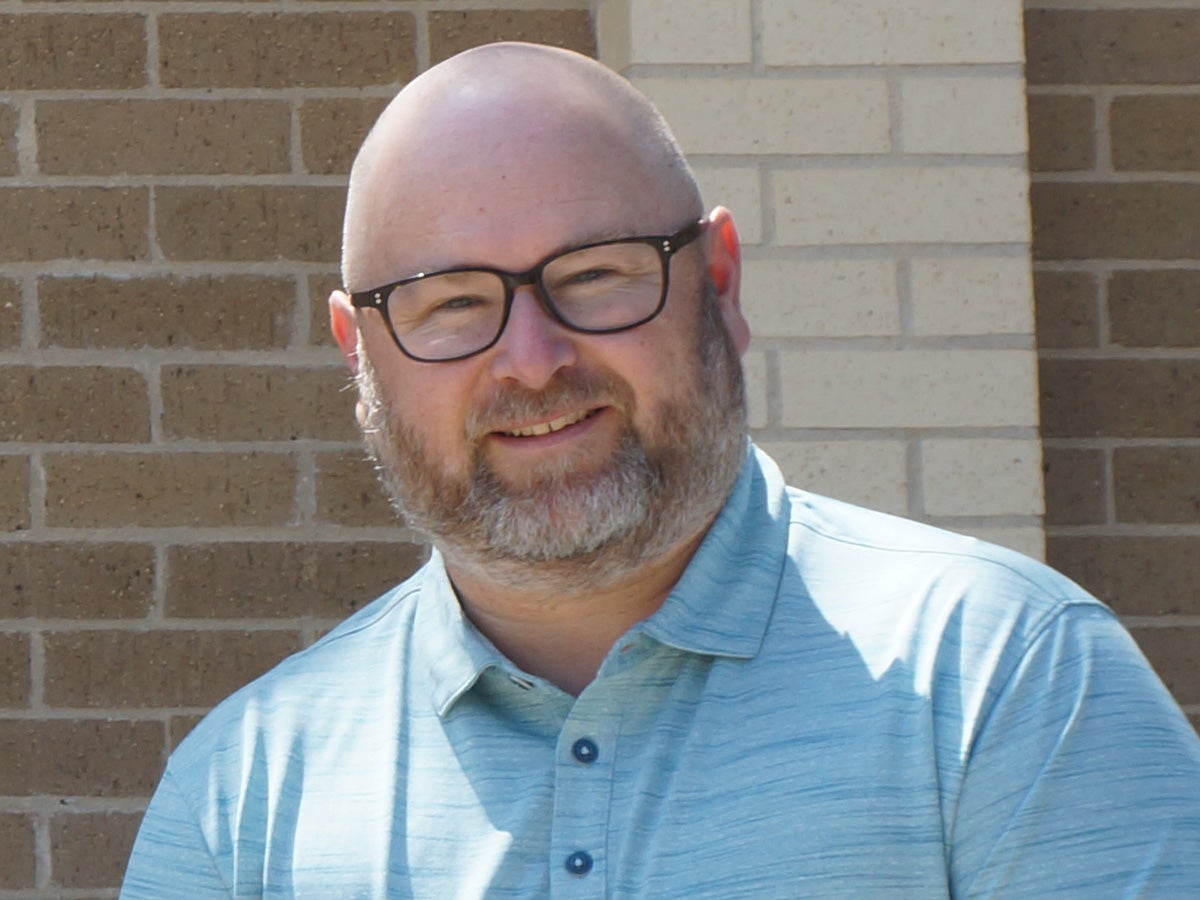
John O'Hearn
Hannah Levitan / Pubilc Health Watch
The hospital clinic offers discounted prescriptions and monitoring equipment for diabetes. But patients often struggle to improve their diet, as inexpensive, healthful food can be scarcer, and food insecurity higher, in rural areas.
“If you don’t have access to a grocery store with really good produce that’s affordable, it’s hard,” O’Hearn said.
Dudley, the physician assistant at the Lufkin clinic, part of Angelina County & Cities Health District, said about half of his patients have diabetes. Most are uninsured or have Texas Medicaid coverage, and the caseload is growing and getting younger. “Lots of kids with Type 2 diabetes,” he said.
Because the clinic takes uninsured patients, local hospitals refer a lot of people whose diabetes has spiraled into an emergency. So Dudley sees many cases that are medically and socially complex.
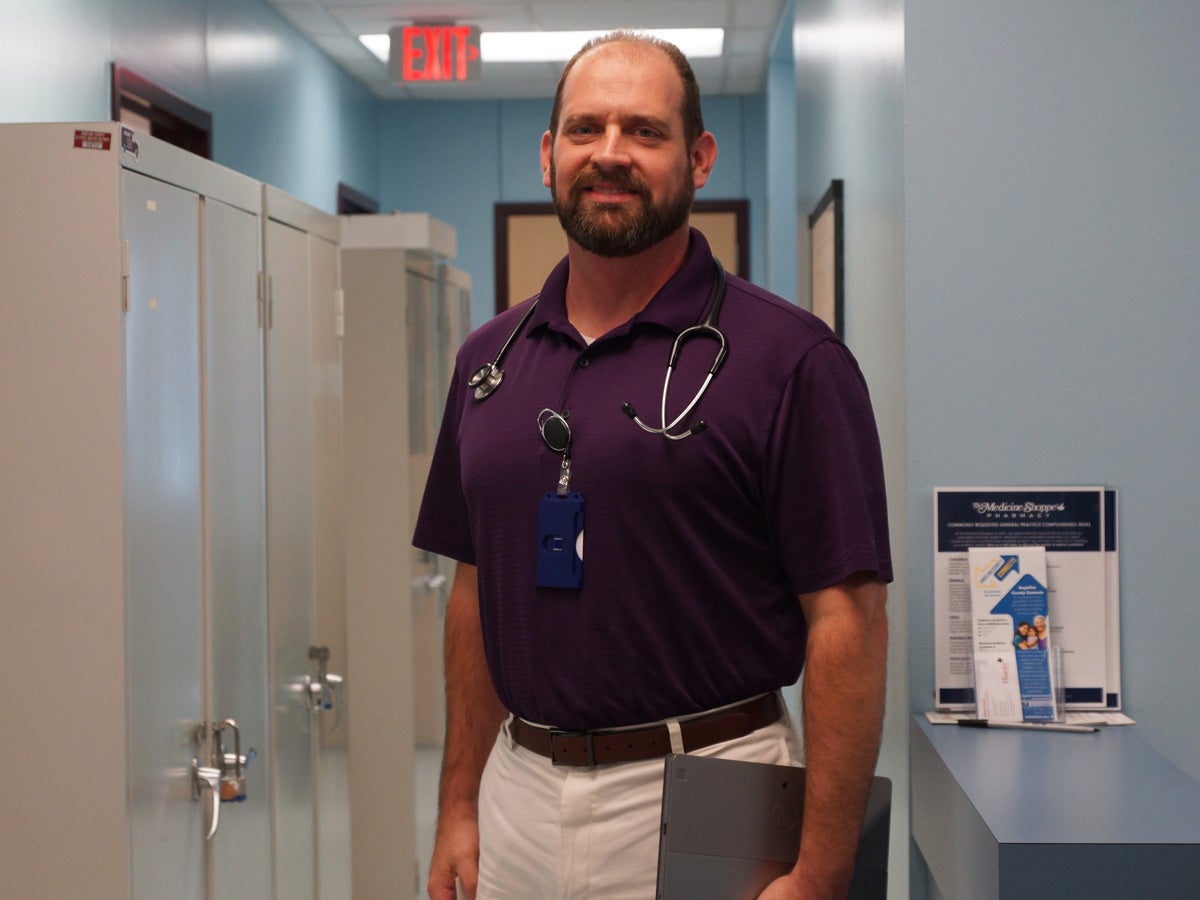
Aaron Dudley
Photo: Hannah Levitan / Public Health Watch
More coverage would make life easier for many patients, he said, especially with access to a full range of treatments, including newer, more effective ones. But he doesn’t expect it to slow the growth in cases.
“Better insurance coverage is not the only issue here,” he said.
Other issues include poor diets and obesity, lack of physical activity, poverty, and depression and stress tied to the demands of managing a chronic disease, Dudley and other providers said.
Jeff Bell, a family medicine doctor at a university-based clinic in Lufkin, is not optimistic the growth in diabetes can be stopped, given the underlying medical and social risk factors and underfunding of prevention. “It would take a herculean effort from everyone,” he said.
About a third of his patients have diabetes; 2 percent of his patients are uninsured and 19 percent have Texas Medicaid. He diagnoses a new case about once a week, with the most common severe outcome he sees being diabetic neuropathy, or nerve damage.
If more Texans had health insurance, he said, many would access medical care earlier and more often. “They won’t have to choose between putting food on the table and going to the doctor. And here in East Texas, that’s not an uncommon situation … Would that lead to better outcomes? I certainly hope so.”
Coverage Makes a Difference
Jeremy Rutledge is doing everything he can not to follow his father to an early grave.
Rutledge, 41, who lives about 50 miles southeast of Dallas in Gun Barrel City, was diagnosed with Type 2 diabetes this year. Three years ago, the disease killed his father at age 56.
Born and raised in nearby Mabank, Rutledge spent much of his life in correctional and mental institutions. In 2019, two years since his last incarceration and unable to work, he qualified for Texas Medicaid due to severe disability from post-traumatic stress disorder.
“It’s made all the difference,” he said of the coverage. “I haven’t had any kind of medical care my whole life, really.”
Earlier this year, Rutledge was experiencing numbness in his fingers and toes. His mother, who also has diabetes, told him to get it checked. He had insurance, so he didn’t wait, he said.
At the clinic, an A1C test revealed a dangerously high blood-sugar level of 8.6 percent. Normal is below 5.7 percent. Rutledge thought of his father and his children and family, with whom he had only recently reunited.
The clinic—East Texas Community Clinic, which serves uninsured and low-income residents in Henderson County—got Rutledge on a treatment plan and referred him to its diabetes educator.
During an eight-week education course, Rutledge learned how to manage the disease at home with diet, testing and medicine. He brought his A1C level down to 7 percent and lost more than 40 pounds. His numbers are still getting better. “I have way too much to live for now,” he said.
Research shows that having health coverage leads to better diabetes outcomes and less treatment rationing.
“Generally speaking, having health insurance encourages us to seek care sooner rather than later,” said Timothy Callaghan, an associate professor at the Boston University School of Public Health, who studies health access for vulnerable populations. “When you have insurance, the burden on you to reach out to a provider and set up an appointment is far lower.”
One untapped way to cut Texas’ uninsured rates is Medicaid expansion, which widens eligibility for adults who earn up to 138 percent of the federal poverty level. For a single adult, that’s a little more than $20,000 a year. The federal government picks up 90 percent of the cost of expansion.
In Texas, low-income adults without disabilities or dependents are not eligible for Medicaid. Parents in a family of four can’t make more than $4,000 a year to qualify.
The Affordable Care Act has been a boon for people with diabetes.
Before the law—when insurers could legally deny coverage to people with pre-existing conditions—17 percent of nonelderly adults with diabetes, including 33 percent of those with low incomes, were uninsured, according to a 2019 study by University of Southern California researchers. Afterward, those uninsured rates declined by 12 and 27 percentage points.
In states that expanded Medicaid, studies suggest the law led to:
- More people obtaining diabetes medications, including insulin.
- A surge in newly diagnosed diabetes cases.
- Healthier diabetes biomarkers, such as A1C levels and blood pressure.
- Improvements in self-reported diabetes management.
- A decrease in lower-extremity amputations.
“Medicaid expansion has had real, observable impacts,” said Callaghan, who co-authored the diabetes management study. He called it a “huge positive” because diabetes inflicts such a high death toll in rural areas, especially in the South.
East of Texas, in Louisiana, John Madison, 64, recently signed up for Medicaid coverage, thanks to the state’s passage of expansion in 2016, which cut its uninsured rate in half within two years.
Madison, who lives in in the city of Franklin, has had diabetes for nearly half his life. For years, he managed it using a health plan offered through his maintenance job at a local Head Start program. But his very-low income made the co-pays for diabetes medicines— up to $100 a month—a financial burden.
“I had to have my medicine, but it was a hardship,” he said. Still, “I never went without, even if I had to borrow [money].”
A co-worker helped him sign up last year for Medicaid, which covers his prescriptions.
Gary Wiltz, Madison’s doctor and CEO of Teche Action Clinics, a network of safety net clinics in the area, said stories like Madison’s are common now. Since Louisiana adopted expansion, Wiltz said, uninsured patients have gone from 60 percent of the clinics’ caseload to about 5 percent.
Louisiana reports on its Medicaid-expansion “dashboard” that the change has led to almost 50,000 adults being newly diagnosed with and treated for diabetes.
“It was like a godsend to these patients,” Wiltz said. “Now we had a way to treat them more holistically.”
One Day at a Time
Nohemi Luviano, 35, has a family history of diabetes—both her parents and her brother and sister have it—but she still wasn’t ready when a doctor told her in 2021 that she was diabetic, too. “It’s different when it hits you,” the Tyler resident said. “I was so upset with myself.”
On the day she was diagnosed, Luviano’s A1C was so high that a provider at Bethesda Health Clinic injected her with insulin and sent her home with free samples. Her life immediately changed.
At first, she pricked her finger and tested her blood eight times a day. Now, she’s down to two. She injects long-lasting insulin once a week and takes daily prescriptions to protect her organs and control her cholesterol.
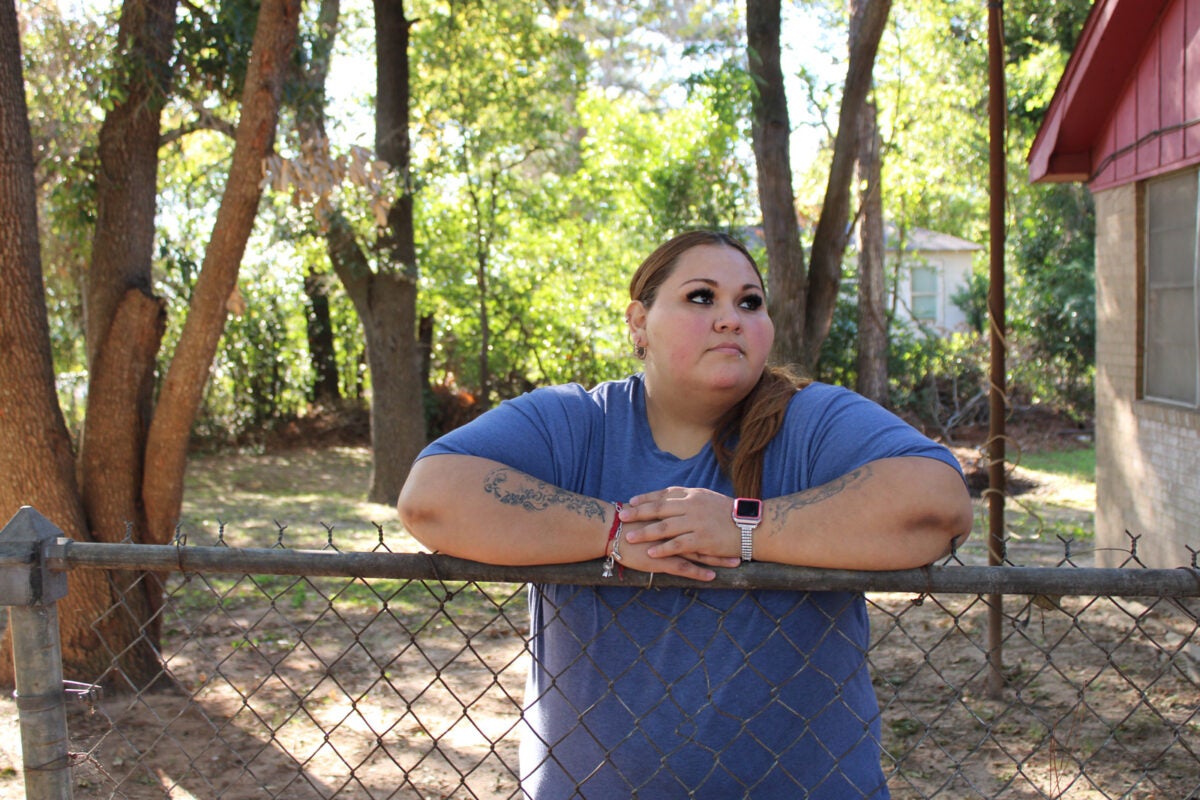
Tyler resident Nohemi Luviano is working with a diabetes educator at Bethesda Health Clinic in Tyler to help her manage her diabetes.
Jennifer Scott / Public Health Watch
Luviano, who’s uninsured, receives free insulin through the Bethesda clinic and is working with the clinic’s lead nurse, Marsha Jones, to change her diet. It’s stressful on top of caring full-time for her young children and two elderly parents. But she’s progressing—20 pounds down so far. The care she provides for family reminds her of the disease’s grim outcomes.
Three days a week, she brings her mother to dialysis for diabetes-related kidney failure. The treatment room is often filled with patients missing digits and limbs, in wheelchairs and on crutches. She’s seen people die and be resuscitated.
Luviano sees it as a warning. “I try to be tough,” she said, “but to know this is all from diabetes.”
Top Image: Yolanda Seaton opens a box of diabetes medication at her home in Tyler, Texas. Seaton receives diabetes care at a local clinic that serves the working uninsured. The access has saved her vision. Photo: Jennifer Scott / Public Health Watch
This story is part of “The Holdouts,” a collaborative project focused on the 10 states that have not expanded Medicaid under the Affordable Care Act. The project is supported by grants from The Commonwealth Fund and the T.L.L. Temple Foundation. The contents of this article do not necessarily reflect the views of T.L.L. Temple Foundation or any of its directors, officers or employees.
Daniel Carter, co-director of Texas Community Health News at Texas State University, produced the "Diabetes in Texas" visualization.


